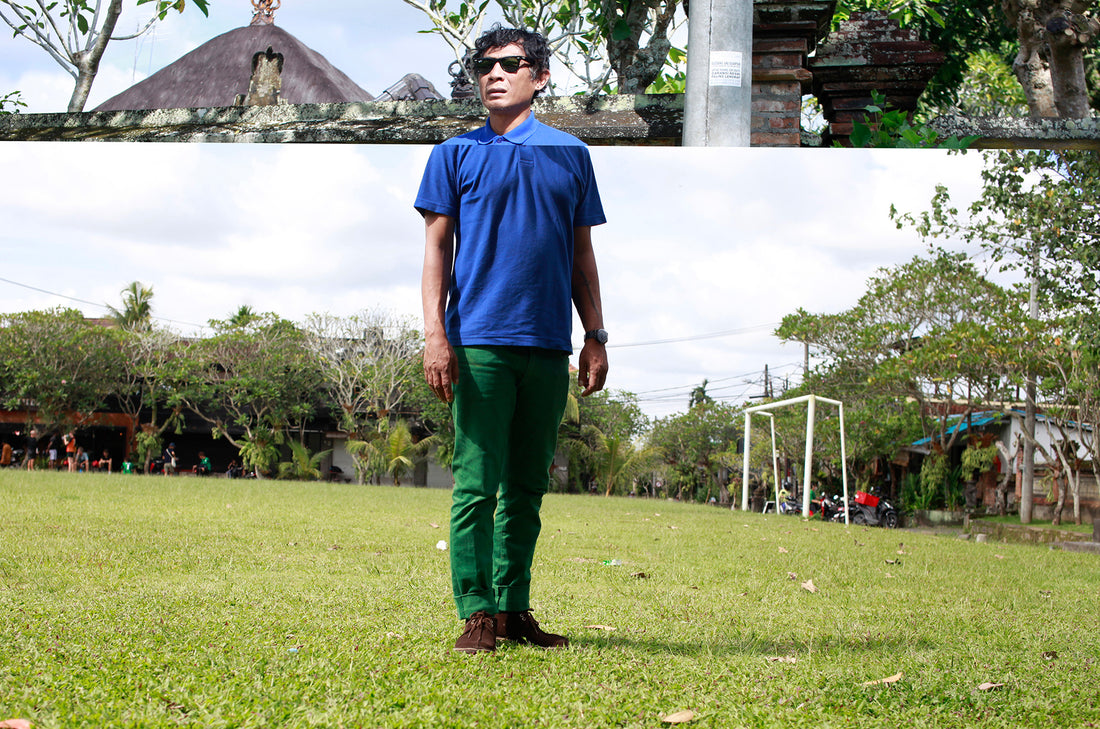
How do you see photography through your life journey?
I have been using photography as a tool of storytelling since I was young. And while I was studying in ISI Jogja, I got a chance to explore photography more intensely. I can draw but I prefer to use photography as my medium to explore.
Photography challenges me to explore my critical thinking also, I like and enjoy the process of that. If you see my art, some of my photography art is combined with installation to bring certain kinds of feelings to the audience.
And about the research process behind your artwork. Do you mind sharing some? Because we see it’s a combination of culture, society, and history
I like to do it over a long period, like just doing the research. It can take up to 2-3 years.
I’m focused on spontaneous feelings, being aware of my environment can ignite the surprise feeling or trigger me to dig more. And that I found always circles back to being connected to the deeper complexity of humans. I like to absorb mundane scenes, social and individual movements, as their hand gestures. Simple things can bring a complex realisation and also complex things can be a simple closure. It’s a paradox that is good to be aware of.
Can you share your photography career journey as a fine art artist?
After college, I worked for a creative team company in Jakarta. Doing commercials, campaigns, and joining band tours to document their concerts. I have been through that phase and I felt I can’t fall in line with the workflow of the industry. So I decided to become a full-time artist when I reach the age of 27.
Back at that time photography was a quite new medium in the Fine-art industry. Not so many people are interested in collecting photos as an art investment, and the industry still focuses on paintings/ sculpture. Videos and photography were still rare back in 2005-2006.

Can you tell us about one of your art residence experiences?
There’s one that is quite memorable. It was when I did an art residency in Korea back in 2010. I went around to meet the locals, asking about old photos of themselves and their families. While collecting photos from various people I learned that photo albums hold a lot of memories, not only of people, but also of the environment, the buildings, and body language. It gives me feelings about the truth of times.
Tell us about your experience seeing photography in the art industry. How was it?
Multimedia art started to get a scene in the art industry around 2010ish, especially in Indonesia, there was a transition in artists exploring more media like short videos, abstract performance websites, and photography. For photography itself, photographers more often make an art book rather than limited art printed pieces to be exhibited. Because again, the demand of people wanting to collect it was still not enough. But slowly the market builds up and now art photography has its audience of collectors and it's been growing.

Tell us about your experience seeing photography in the art industry. How was it?
Multimedia art started to get a scene in the art industry around 2010ish, especially in Indonesia, there was a transition in artists exploring more media like short videos, abstract performance websites, and photography. For photography itself, photographers more often make an art book rather than limited art printed pieces to be exhibited. Because again, the demand of people wanting to collect it was still not enough. But slowly the market builds up and now art photography has its audience of collectors and it's been growing.
How did the collective of Ruang Mes 56 come to be back then? What were the intentions?
Ruang Mes 56 can exist simply because of our desire to move together with collective spirits. Ruang Mes 56 is a collective space to share and learn. It's starting from us being college friends.
We learned how to make concepts, to understand art in photography through daily discussion inside the collective. It was hard to find references back then, if we had a good art book, it would be precious and we keep using it repeatedly. Because at the time, there wasn't the Internet, where you can search for any information you want like nowadays. It’s limited, but because of the limitation, we became more strong-willed to dig deeper about photography, meet up to have an open discussion and be critical, and also sharpen our mental creativity.

How do you see Yogjakarta as a centre of the art scene in Indonesia?
80% popularity of Fine art people come to Yogjakarta to learn and grow. Yogjakarta is always a good starting area for you as young artist. They train you mentally and physically as an artist, because of the strong art environment and atmosphere. It’s easy to get support as well as competitors. It’s a tough area but the dynamic of art opportunities in Yogjakarta is endless.
Is it necessary for an artist to be part of a collective?
It’s okay if you don’t have that tendency to be a part of a collective, especially in this 21st century. But for me, a collective gives me spirit and motivates me creatively. It’s the feeling of collective support that I felt really powerful.
How can you see whether someone is an artist or not? Do you have a specific perspective on it?
Whether someone is an artist or not depends on consistency. Because I believe, an artist is like a brand. You need to maintain the quality to be in the industry long-term and to be deemed “worth it” in the eyes of the professional collectors. Or if I may say, at least you have been spending 7 years making art, it's the minimum for a new artist in this art industry. But from the very beginning don't push yourself to be too focused on the quality of your art/ your image as an artist, it will follow. Consistency is a practice that needs to be held. Because when you’re consistent, the consistency is the one that is going to speak loudest about the art value and your belief system of how you do your art.
Experimenting and being curious about your art are also key. Personally, I don’t believe in a style that determines my work. If people ask me what kind of photography style I do, simply I will say “Freestyle”. The experiment also means exploring different thoughts/ lenses of perspectives.

Do you think Bali has a strong potential for the art scene?
Every place has the potential to be something. But Bali already focuses on the direction of tourism. It will take a long time and a big collective movement repetitively to switch the focus to art scenes like in Yogyakarta, but only if the locals want to change that too. We need to understand mindfully what the locals collectively need.
How do you feel about Bali?
I feel Bali is like a vacation, even If I do an Art residency program, the way my body moves day by day is slower and the feeling I get is very calm. And as for food, I like the Pork in Bali, they have a really specific taste. Wherever I go in Bali I am always looking for Babi Guling and Lawar.

Jim Allen Abel a.k.a JIMBO
Written by Tiarama
Photos by Jimbo

